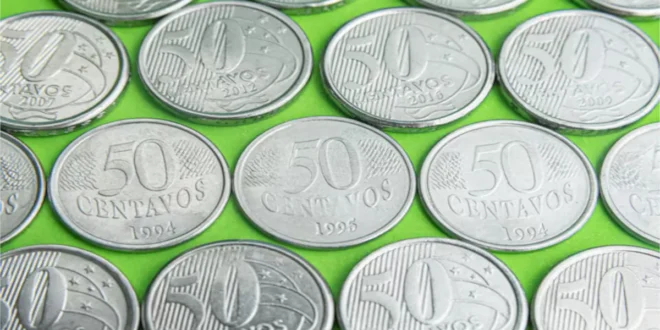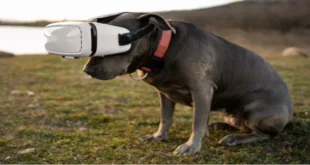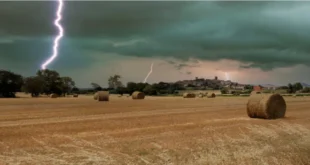Table of Contents
ToggleEverything You Need to Know About the 50 Centavos Coin Value
The 50 centavos coin is more than just a small piece of currency. Its historical, cultural, and collectible significance makes it a fascinating topic for coin enthusiasts, historians, and investors alike. Whether you’re a numismatist seeking to expand your collection or someone who stumbled upon a vintage 50 centavos coin, understanding its value is crucial. In this comprehensive guide, we will delve into the history, factors influencing its value, and tips for collectors, ensuring you get the most out of your journey into the world of 50 centavos coins.
What is the 50 Centavos Coin?
The 50 centavos coin has been a standard denomination in many countries, primarily within Latin America and the Philippines. Derived from the Spanish word “céntimo,” meaning “hundredth,” centavos represent fractions of a base currency, such as pesos or escudos. The 50 centavos coin, therefore, typically represents half of a peso.
A Brief History of the 50 Centavos Coin
Origins and Global Use
The 50 centavos coin has roots in the Spanish colonial period when centavos were introduced as subunits of currency. Countries such as Mexico, Brazil, Argentina, and the Philippines adopted the centavos system during and after Spanish colonization. Over time, these coins evolved to reflect the unique history, culture, and economy of each nation.
The Philippines’ 50 Centavos Coin
One of the most iconic 50 centavos coins comes from the Philippines. Introduced during the American colonial period in the early 20th century, these coins were minted with intricate designs and often crafted from silver, making them highly collectible. Later versions transitioned to less valuable metals as inflation and changing economic conditions influenced minting practices.
Modern Variations
Modern 50 centavos coins are typically made from base metals such as copper, nickel, or steel and are still in circulation in several countries. However, vintage and commemorative coins, particularly those minted in limited quantities or from precious metals, hold significant value for collectors.
Factors That Influence the Value of a 50 Centavos Coin
The value of a 50 centavos coin depends on several factors. Here’s what collectors and appraisers consider when determining its worth:
1. Year of Minting
Older coins, especially those minted before the 20th century, tend to be more valuable. For instance:
- Pre-1945 coins: Coins from this period, particularly those made of silver, are often highly sought after.
- Post-1945 coins: While these are more common, specific years with lower mintage can still fetch a premium.
2. Material Composition
Coins made from precious metals like silver or gold are inherently more valuable. For example, the Philippine 50 centavos coins minted between 1903 and 1945 were 75% silver, making them appealing to both investors and collectors.
3. Condition (Grade)
The coin’s condition, or grade, plays a significant role in its value. Grading is assessed using a scale, with the following categories being the most common:
- Mint State (MS): Perfectly preserved, with no wear or damage.
- Extremely Fine (EF): Minimal wear, with sharp details.
- Very Fine (VF): Moderate wear but still visually appealing.
- Good (G): Significant wear, with some details obscured.
4. Rarity
Coins with low mintage numbers or those from specific years or mints are rare and, therefore, more valuable. For example, limited-edition commemorative 50 centavos coins can command a high price.
5. Historical Significance
Coins associated with specific historical events or eras, such as those from colonial periods or wartime economies, often carry added value due to their cultural and historical importance.
6. Demand Among Collectors
The value of a 50 centavos coin also depends on market demand. Coins with unique designs, historical importance, or errors are typically more desirable.
Iconic 50 Centavos Coins Around the World
Mexican 50 Centavos
- Design: Typically features prominent figures from Mexican history or cultural symbols such as the eagle and snake.
- Notable Variations: The 50 centavos coins from the mid-20th century, made of bronze and copper-nickel, are popular among collectors.
Philippine 50 Centavos
- American Colonial Era: These coins, minted in silver, feature Lady Liberty striking an anvil and a volcano in the background. The reverse side often depicts an eagle and shield.
- Modern Coins: Current 50 centavos coins are made from nickel-plated steel and have simpler designs.
Brazilian 50 Centavos
- Design: Modern coins feature a contemporary design highlighting national pride.
- Collectibility: Older coins, particularly those made of silver, are highly valued by collectors.
How to Determine the Value of Your 50 Centavos Coin
If you’re curious about the worth of a 50 centavos coin, follow these steps to assess its value:
1. Identify the Coin
- Look for inscriptions, dates, and symbols to determine the coin’s country of origin and year of minting.
- Check the coin’s material by researching mint records or using a metal testing kit.
2. Assess the Condition
Inspect the coin under a magnifying glass to check for wear, scratches, or damage. Compare it to a coin grading chart to estimate its grade.
3. Research Market Trends
Search online marketplaces, such as eBay or specialized numismatic forums, to see recent sales of similar coins. Pay attention to condition and rarity.
4. Consult an Expert
If you believe your coin is rare or valuable, consider having it appraised by a professional numismatist or sending it to a grading service like PCGS (Professional Coin Grading Service) or NGC (Numismatic Guaranty Corporation).
Tips for Collecting 50 Centavos Coins
If you’re interested in starting or expanding your collection, here are some expert tips:
1. Focus on Quality Over Quantity
It’s better to have a few high-grade coins than a large collection of low-value pieces. Coins in better condition are more valuable and easier to sell.
2. Learn the History
Understanding the historical context of your coins can make collecting more enjoyable and help you identify rare pieces.
3. Protect Your Coins
Store your coins in protective cases to prevent damage from handling, moisture, or exposure to air. Avoid cleaning coins, as this can reduce their value.
4. Network with Other Collectors
Join numismatic societies or online forums to connect with fellow collectors, share knowledge, and trade coins.
Where to Buy or Sell 50 Centavos Coins
If you’re looking to buy or sell 50 centavos coins, here are some reliable platforms:
- Online Marketplaces: eBay, Etsy, or specialized coin auction sites.
- Coin Shows: Events where collectors and dealers gather to buy, sell, and trade.
- Local Dealers: Visit a reputable coin shop for appraisals or to make purchases.
- Numismatic Clubs: Join local or international clubs to access exclusive sales and auctions.
Common Mistakes to Avoid
1. Ignoring the Coin’s Condition
Even rare coins lose value if they are heavily worn or damaged. Handle coins carefully and store them properly.
2. Falling for Counterfeits
Counterfeit coins are common in the collectibles market. Always verify authenticity before purchasing a high-value coin.
3. Overpaying
Research market prices and consult experts to avoid overpaying for a coin.
Conclusion
The value of a 50 centavos coin goes beyond its face value. Whether you’re drawn to its historical significance, artistic design, or investment potential, understanding the factors that influence its worth is essential. From rare vintage coins to modern collectibles, the 50 centavos coin continues to captivate enthusiasts worldwide. By following this guide, you’ll be well-equipped to explore, evaluate, and enjoy the fascinating world of 50 centavos coins.
Frequently Asked Questions (FAQs)
What factors affect the value of a 50 centavos coin?
The value of a 50 centavos coin depends on several factors, including its year of minting, material composition, condition, rarity, historical significance, and current market demand. Coins made of precious metals like silver or with low mintage numbers are typically more valuable.
How can I determine the condition or grade of my 50 centavos coin?
You can evaluate the condition of your coin by examining its wear and clarity of detail. Grades like Mint State (perfect condition) or Extremely Fine (minimal wear) fetch higher prices. For accurate grading, consult a professional numismatist or submit your coin to a certified grading service.
Are silver 50 centavos coins more valuable than modern versions?
Silver 50 centavos coins, such as those minted in the early 20th century in the Philippines, are generally more valuable due to their precious metal content and historical significance. Modern coins, made of base metals, often have lower collectable worth.
Where can I sell my 50 centavos coins for a good price?
You can sell your 50 centavos coins at online marketplaces like eBay, coin auction websites, or through local coin dealers. Attending coin shows or joining numismatic clubs can also connect you with interested buyers willing to pay competitive prices.
What are some common mistakes to avoid when buying 50 centavos coins?
Avoid ignoring their condition, overpaying without researching market prices, and falling for counterfeits when buying coins. Always verify authenticity and seek advice from experienced collectors or dealers to make informed decisions.
Are 50 centavos coins still used in circulation today?
In some countries, like Mexico and the Philippines, modern 50 centavos coins are still part of daily transactions. However, older versions, especially those made of silver or featuring historical designs, are now considered collectable items rather than currency.
READ ALSO: Water Analysis Kit: A Comprehensive Guide to Water Quality Testing
 Touch Blog
Touch Blog



